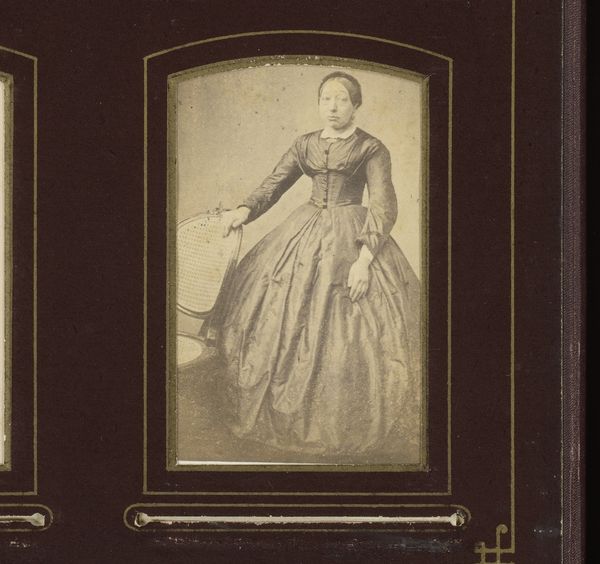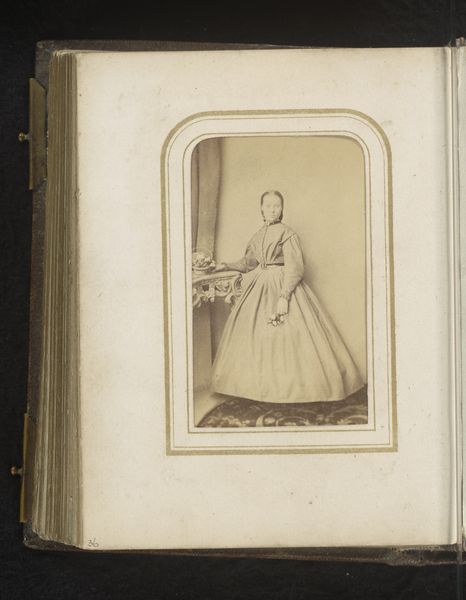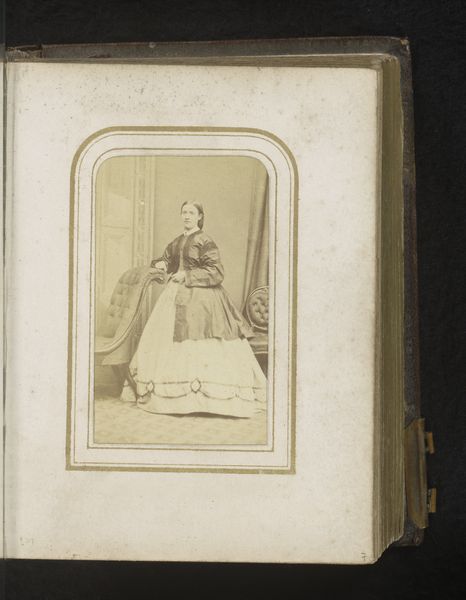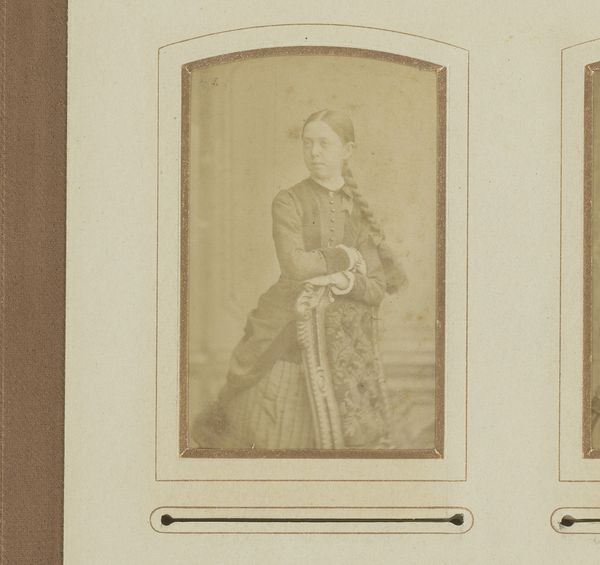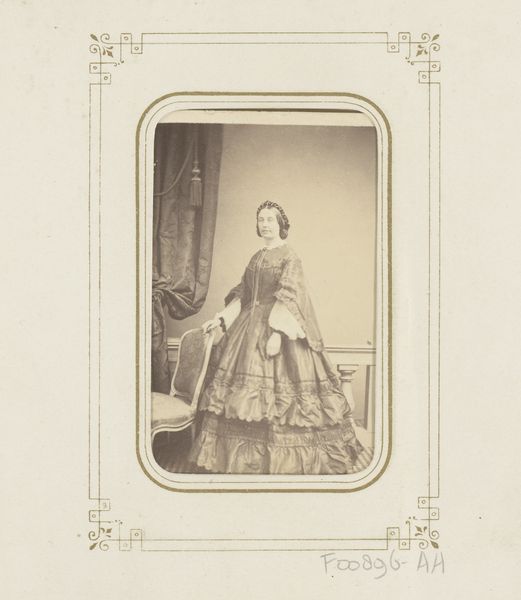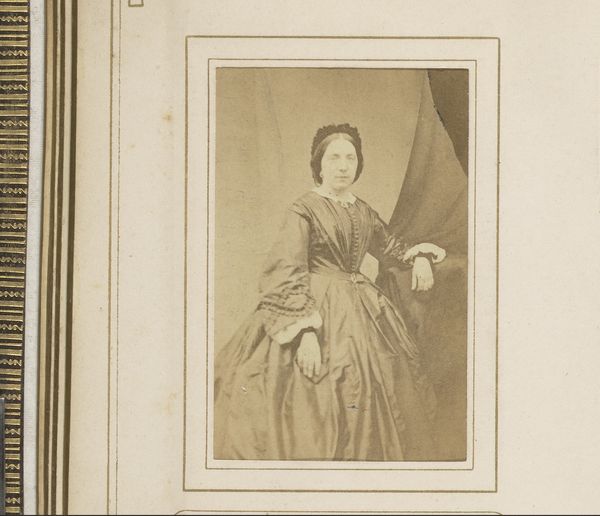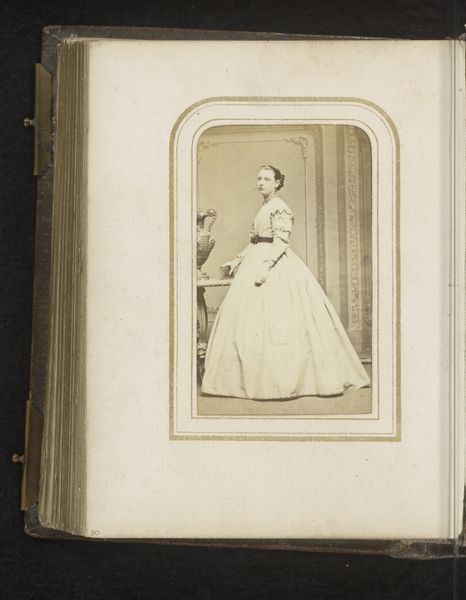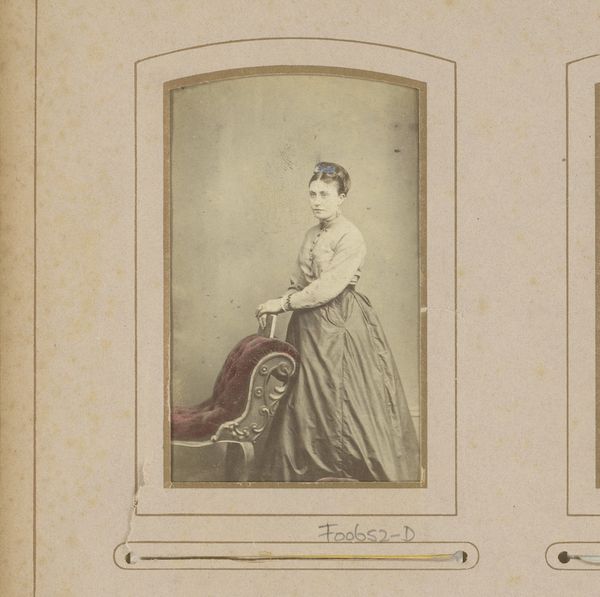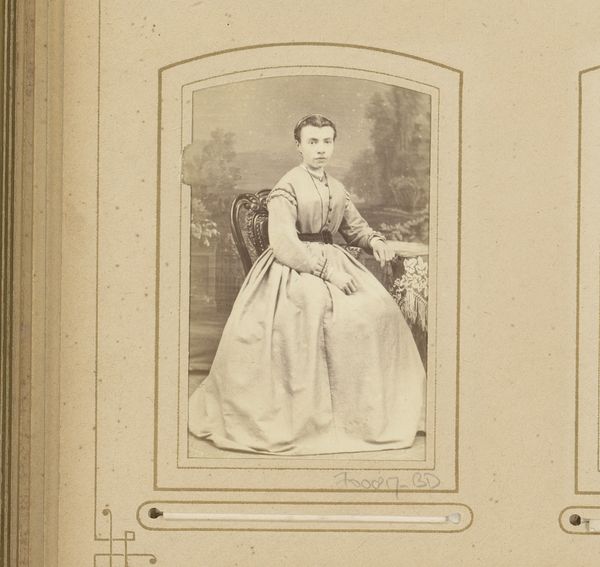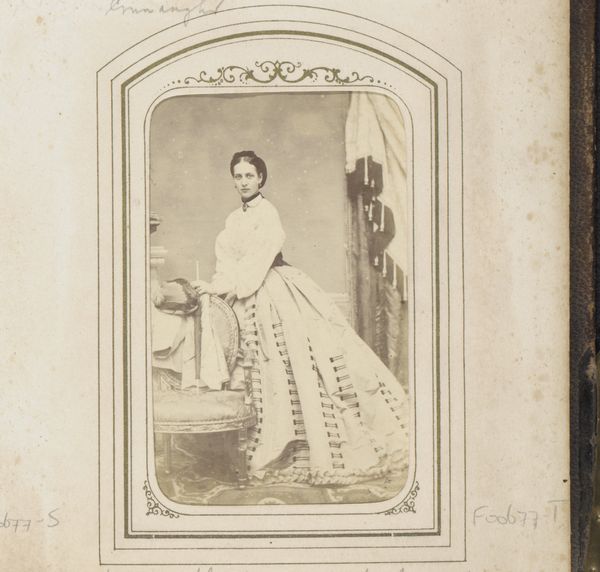
photography, gelatin-silver-print
#
portrait
#
photography
#
gelatin-silver-print
Dimensions: height 82 mm, width 53 mm
Copyright: Rijks Museum: Open Domain
Editor: So here we have a gelatin silver print from between 1857 and 1908 by Woodbury & Page, titled *Portret van een vrouw, zittend aan een tafel*. It's a portrait of a woman sitting at a table, quite formal, almost imposing, and I’m curious what stood out to you about this particular image? Curator: I think it’s important to consider the historical context of photography at this time. Portraits like this one provided a sense of social identity and permanence. For women, who were often marginalized in public life, such a portrait could represent an assertion of self. Consider the implications of photographic technology; Who had access? How did they wish to be represented? Editor: That's a great point about representation. It makes me wonder how much agency she had in constructing her own image, versus the photographer imposing a certain ideal? Curator: Precisely! Think about the very deliberate pose, her dress, even the set; these all communicate specific ideas about class, status and, ultimately, power. How does it reflect and perhaps even challenge patriarchal norms of the era? This image then becomes part of a much wider social and political dialogue. Do you notice any tension between these expectations and the sitter's own personality? Editor: Now that you mention it, her gaze seems direct and self-assured, which is in stark contrast to the restrictive clothing and setting. Curator: Exactly. The photograph is more than just a representation, but evidence that, despite limitations imposed upon women at that time, she still was very determined to make a claim to independence. Editor: Thanks, this made me think about portraiture and identity from an angle I had not previously considered! Curator: And I found myself reminded of the inherent power dynamics present even in seemingly straightforward portraiture.
Comments
No comments
Be the first to comment and join the conversation on the ultimate creative platform.
